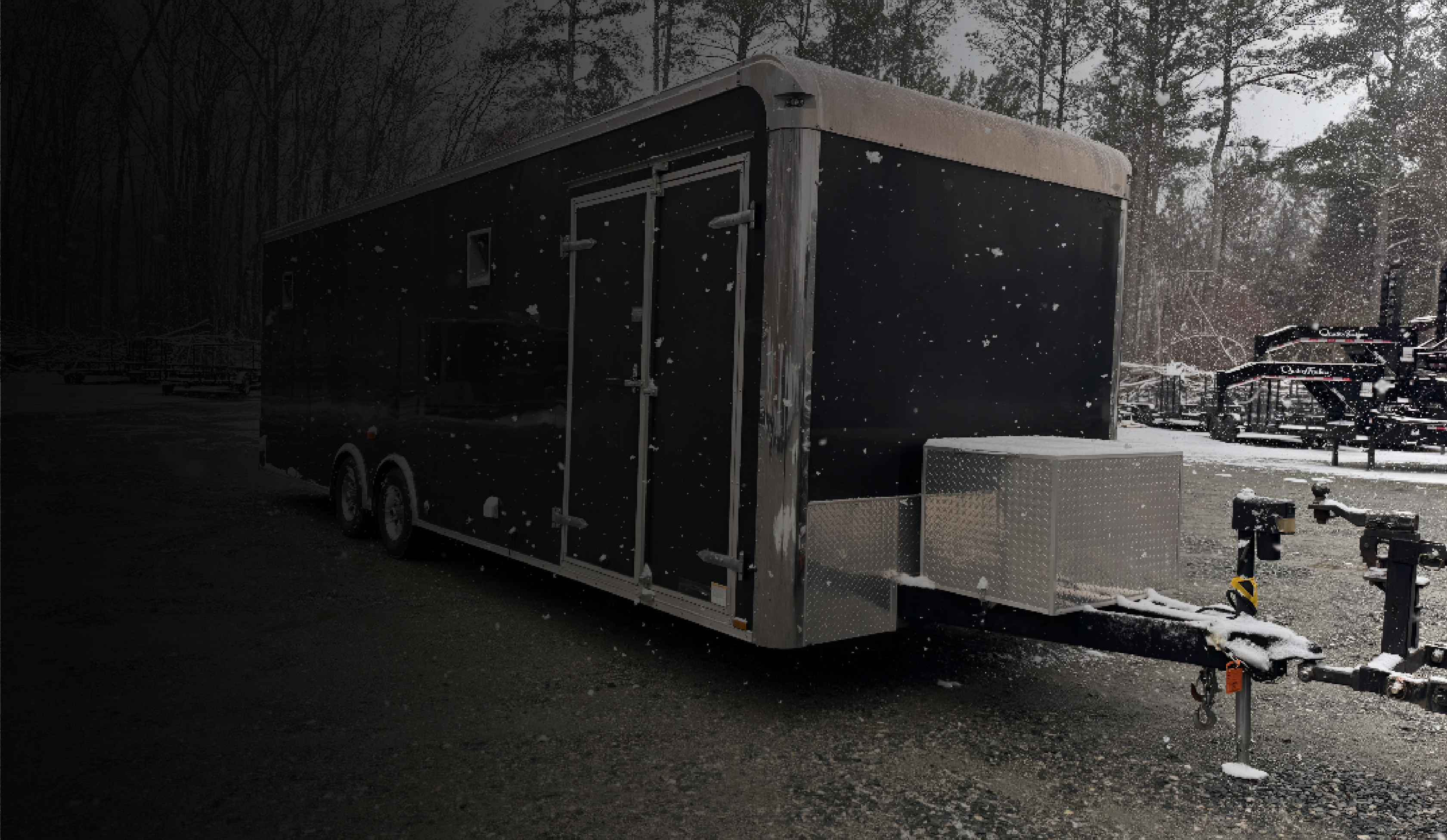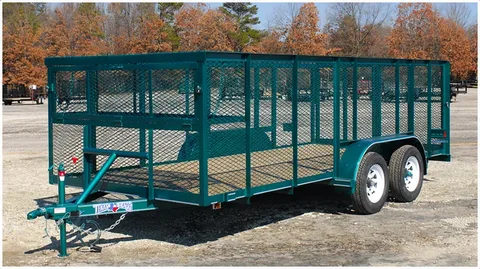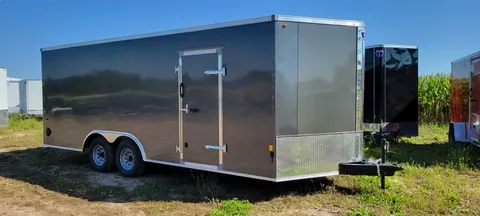GVWR for trailers, or Gross Vehicle Weight Rating, isn’t just a technical term manufacturers throw in to confuse you. It’s a clear safety limit, designed to tell you exactly how much your trailer can carry without compromising stability, braking, or legality.
Here’s the thing, most people have heard of GVWR, but only kind of get what it means. They’re not sure where to look for it, how it works with payload capacity, or why tongue weight can make or break a towing trip. And that’s where things can get risky fast.
So let’s skip the confusing jargon. By the time you’re done reading this, you’ll know exactly what trailer gross vehicle weight rating really means, how to figure it out for your own trailer, how it ties into towing laws, and how to keep your setup safe, stable, and legal — without turning every trip into a guessing game.
What Is Trailer Gross Vehicle Weight Rating?
GVWR, or Gross Vehicle Weight Rating, is the maximum weight your trailer can safely handle when fully loaded. This isn’t just the weight of your cargo, it’s the combined total of your trailer’s empty weight (curb weight), all cargo, fluids, and the force your trailer tongue applies to the hitch.
For example, if your trailer’s GVWR is 7,000 lbs and the empty weight (curb weight trailer) is 2,000 lbs, you have 5,000 lbs of usable payload capacity. That limit exists because every trailer is designed with specific axle ratings, frame strength, and braking systems. Push it beyond that, and you’re overloading the system.
GVWR vs Payload Capacity Trailer: What’s The Difference?
Here’s where many new trailer owners get it wrong: trailer payload capacity vs GVWR are not interchangeable. GVWR is the total safe limit; payload capacity is what’s left for cargo after accounting for the trailer’s empty weight. Payload capacity calculation starts with subtracting your trailer’s curb weight from its GVWR, giving you the maximum cargo weight you can safely carry.
If GVWR is 7,500 lbs and your trailer weighs 2,500 lbs empty, your payload capacity is 5,000 lbs. Overload it, and you’re still breaking GVWR limits, even if your truck can pull it.
Why It Matters?
Let’s say you load your trailer with building materials and figure, “I’m well under 5,000 lbs.” But you didn’t account for the weight of fuel, tools, and water tanks. Suddenly, you’ve crossed the GVWR and stressed the axle rating trailer, risking failure during transit. That’s why keeping both numbers in mind is key.
Read our blog on Do Trailers Need License Plates? A State-by-State Guide (2025)
How to Calculate Trailer GVWR (Step-by-Step)
If you want to calculate your trailer’s GVWR, here’s the first thing to know: you actually don’t have to do complicated math from scratch. Your gross trailer weight rating is determined by the manufacturer and takes into account factors like axle rating, frame strength, braking capability, and it’s almost always printed on the trailer VIN tag GVWR label.
But if the sticker is missing or you’re double-checking, here’s the process:
- Find Your Trailer’s Axle Ratings (GAWR)
Look at the data plate on each axle, it tells you the Gross Axle Weight Rating for that axle.
Example: Two axles rated at 3,500 lbs each = 7,000 lbs combined axle capacity. - Add the Weight Carried by the Tongue
The hitch transfers some weight to the tow vehicle, usually 10–15% of the trailer’s loaded weight. Add this to your axle total for a more accurate GVWR. - Factor in the Trailer’s Structural Limits
Axles might handle more than the frame or brakes can. The GVWR should never exceed the lowest-rated component (axle, frame, tires, or hitch).
| Formula to Calculate: Trailer GVWR = (Total Axle Capacity) + (Allowable Tongue Weight) |
How Tongue Weight Impacts Your Towing Stability?
Tongue weight is the downward force your trailer’s coupler applies to your hitch ball. The general rule is that your trailer tongue weight percentage should be 10–15% of your loaded trailer weight, and proper trailer load balancing is key to achieving that range without causing sway or instability.
Too light? The trailer sways dangerously at highway speeds.
Too heavy? Your steering becomes sluggish, and your tow vehicle’s rear suspension suffers.
You can measure tongue weight using a specialized scale or at some commercial weigh stations. If it’s too low, move heavier cargo forward. If it’s too high, shift the weight rearward, but always keep it balanced over the axles for stability.
Legal GVWR Limits for Trailers in the USA
Each state has its own towing safety regulations, and these often specify weight limits, braking requirements, and licensing rules. In the USA, it’s a legal limit that ties directly into road safety laws, DOT inspections, and even your insurance coverage. If you exceed your trailer’s GVWR, you’re not just risking a blowout or bent axle. You could be looking at fines, citations, or liability issues if something goes wrong.
Federal vs. State Rules
At the federal level, the Department of Transportation uses GVWR to classify vehicles and determine whether you need special licensing, such as a CDL (Commercial Driver’s License). But states layer their own rules on top, for example:
- Some states require trailers over a certain GVWR to have brakes on all wheels.
- Others have stricter maximum trailer weight legal limits depending on the road type.
- CDL rules often kick in when your combined GCWR (truck + trailer) exceeds 26,000 lbs.
That’s why it’s important to check your state’s DMV or DOT website before loading up.
What’s The Difference: GVWR vs GCWR
It’s not enough to just check the trailer, that’s why you have to make sure your tow vehicle can handle it. This is where the GCWR vs GVWR trailer comes in.
- GVWR: Max weight for the trailer itself.
- GCWR: Max combined weight for your tow vehicle, trailer, and all cargo.
If your truck’s tow rating is 8,000 lbs and your trailer’s GVWR is 7,500 lbs, that doesn’t leave much room for cargo in the truck. Ignoring GCWR is a recipe for overworking your engine, overheating brakes, and poor handling.
What To Do When You’re Over GVWR?
If you’ve just weighed your trailer and found you’re over the limit, don’t panic—but don’t hit the road either. Your options are:
- Remove non-essential cargo.
- Redistribute weight to balance axles.
- Upgrade to a trailer with a higher gross trailer weight rating.
- Use professional weight distribution equipment to better handle heavy loads
Wrapping Up!
GVWR for trailers is way more than just some number on a sticker. It’s what keeps your towing safe, smooth, and headache-free. When you really get your head around your trailer’s weight limits and stick to them, you’re saving yourself from costly problems and making every trip easier.
If you’re thinking about getting a trailer that’s solid, straightforward, and built with safety in mind, you should definitely check out Double A Trailers. Their trailers are designed with precision engineering, high-quality components, and clear labelling.
FAQ’s
How do I find the GVWR on my trailer?
GVWR can typically be found on trailer GVWR sticker location like: trailer frame, near the tongue, or on the driver’s side door pillar. It can also be found in the owner’s manual or by contacting the manufacturer.
What does 7,000 GVWR mean on a trailer?
It means the trailer’s maximum safe operating weight, which includes the trailer itself plus everything loaded on it, should not exceed 7,000 pounds.
What is the difference between GVWR and GVW?
GVWR is the maximum weight rating set by the manufacturer for safe operation. Whereas GVW is the actual weight of the trailer (or vehicle) at any moment, including its load. GVW should always be less than or equal to GVWR.
What is the maximum trailer capacity of GVWR lbs?
The maximum trailer capacity (payload) is calculated by subtracting the trailer’s empty weight from the GVWR.





